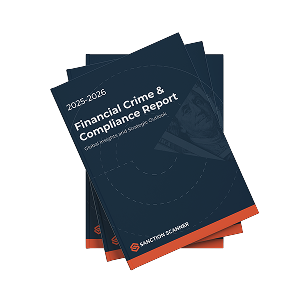What Is an Ultimate Beneficial Owner (UBO)?
An Ultimate Beneficial Owner (UBO) is the person who owns or controls an entity, whether it be directly or indirectly. Even if the ownership is layered, meaning it involves several companies, trusts, or nominees, it still is the UBO who benefits from the organisation or exerts control over it. Since hidden ownership structures and the misuse of shell companies are serious issues that anti-money laundering (AML) and counter-terrorism financing (CTF) try to stop, figuring out who the UBO is an important part of the process that ensures transparency. In this blog post, we’ll be exploring the importance of identifying UBOs more closely, UBO screening, and more.
Why is UBO Compliance Important?
There are several reasons for why UBO compliance should be prioritised by your company. In order to strengthen financial transparency, UBOs should be identified and declared. UBO identification helps unmask shell companies and hidden ownership structures, thus preventing criminals from hiding behind complex corporate layers. AML efforts demand this identification, especially regulators like the FATF, EU, and FinCEN require UBO checks to detect financial crime. Your company should be practicing UBO compliance since it helps reduce the risks of reputational and legal damage, as well as lowering the chances of getting fined and sanctioned.
What Are the Criteria's about UBO?
To identify an UBO, there is more to it than just looking at legal ownership. An UBO is a person holding 25% or more shares or voting rights within your company directly or indirectly. The person has control over decisions made within your company, sometimes the final say, and they benefit from the financial gains of the company’s activities. These criteria are used by regulators to figure out who the UBO is without wasting time or being tricked by complex structures.
How to Identify a UBO?
The first thing to do when looking to identify a UBO is collecting the ownership documents of the company. Documents like company registers, incorporation papers, or shareholder agreements will help you. The next step is mapping out the layers of ownership and control within the company, and complex structures with multiple entities create a harder puzzle to solve. The 25% threshold helps identify who has say within the company, and eases the process. However, additional checks should be done to trace nominees, trusts, or other intermediaries that can be used to hide the real owner. The final step is comparing the results, verifying the UBO and conducting screenings against sanctions lists, politically exposed persons (PEPs) lists, and adverse media to ensure the risk level of the UBO is assessed.
UBO in Global Compliance Frameworks
Global regulatory bodies require UBO identification for full compliance with regulations. The Financial Action Task Force (FATF) 40 Recommendations, especially Recommendation 24, requires countries to make UBO information accessible to authorities which prevents the misuse of legal entities. When it comes to the EU, the 4th, 5th and 6th Anti-Money Laundering Directives (4AMLD/5AMLD) require centralised UBO registries, as well as extending coverage to virtual asset service providers (VASPs). These directives also mandate providing international access to ownership data. Member States are required to have public company beneficial ownership registers. Moreover, rules applying to UBOs must be implemented by 10 July 2026.
In the United States, FinCEN’s Beneficial Ownership Rule urges the usage of a 25% ownership or control threshold, with the Corporate Transparency Act (CTA) establishing a beneficial ownership information (BOI) registry in 2024. To add onto it, similarly in the U.S., Bank Secrecy Act/Anti-Money Laundering (BSA/AML) regulations require risk-based AML programs that specifically include UBO verification as part of their customer due diligence (CDD). The UK’s People with Significant Control (PSC) regime is mandating the disclosure of people with over 25% of ownership or control within a company, as well as the details to be recorded in a public registry. Norway also implemented an obligation for companies to register their beneficial owners, affecting over 500,000 entities in October 2024. The perfect global framework regarding UBO still hasn’t been achieved, but countries are working towards a more compliant environment.
Why Is UBO Identification Important?
There are many benefits to using UBO identification. The process prevents financial crimes like money laundering, tax evasion, and terrorist financing from occurring within your company. The identification process ensures that your company is meeting AML and KYC legal requirements. Identifying UBOs also helps with revealing the risks within your company. These may be shell companies, nominee directors, or complex structures created specifically to hide illicit activities. The most important of all, the process strengthens accountability, and makes it harder for criminals to exploit your company.
UBO in AML and KYC Compliance Programs
When it comes to choosing AML and KYC compliance programs to implement within your company, UBO identification is a must. Your company should be collecting and verifying UBO information during customer onboarding; this way, transparency is reached from the start. Ongoing due diligence (ODD) requires your company to regularly update and review UBO data. Thanks to ODD, the constant monitoring of ownership structures or emerging risks is established. Enhanced due diligence (EDD) is needed for higher-risk customers, which requires more detailed investigations into UBOs and verification of fund sources.
Essential UBO Screening Steps
There are three key steps to every UBO screening. The first one is checking the customer against sanctions lists to figure out if they are sanctioned. The second step involves scanning the customer against PEP databases to note if they are in the list. In that case, the customer is deemed of higher risk, and EDD is conducted. The final step is adverse media reviews. These checks show the negative news and reputational concerns about the customer, urging you to act accordingly.
What are the Key Differences Between IBO and UBO?
Let’s first define what an immediate beneficial owner (IBO) is for our readers and explain its differences from a UBO. An IBO is a direct, immediate shareholder of a company. The level of ownership can be either direct or indirect for UBO. IBOs can be legal entities, whereas UBOs are always natural persons. The role of an IBO is limited to showing who legally holds the shares. An UBO, however, is always a real individual that actually controls or benefits from the company. Therefore, they are crucial for risk assessment and compliance. Regulatory bodies and firms need to know who the real person behind the entity is to create risk scores, and screen them against sanctions, PEP, adverse media lists. Compliance checks for IBOs are optional, whereas UBO identification is mandated within AML and KYC frameworks.
| Aspect | IBO (Immediate Beneficial Owner) | UBO (Ultimate Beneficial Owner) |
| Ownership Level | Direct, first-level ownership | Indirect, final-level ownership |
| Can it be a Legal Entity? | Yes | No. A UBO must be a real person. |
| Purpose of Compliance | Used to understand legal ownership | Critical for risk assessment and financial transparency |
| KYC/EDD Requirement | Sometimes part of the structure review | Mandatory under AML/KYC frameworks |
| Example | Holding company or nominee shareholder | The final person controlling the company |
UBO Laws by Jurisdiction (2025 Overview)
There are varying levels of regulations implemented in different parts of the world regarding the identification and registry of UBOs. In the EU, the 25% threshold is accepted, with some UBO information being public. The United States also puts forth the 25% threshold under FinCEN’s BOI registry, and the findings are not publicly available. In the UK, the PSC regime mandates the disclosure of the UBO that fits 25% threshold in a publicly accessible registry. Singapore similarly has the 25% threshold, and the information is disclosed to ACRA and is used for regulator access. The UAE also uses the 25% threshold, and while registration is needed with the Ministry of Economy or local authorities, the information is only accessible to the government.
Hong Kong similarly has the 25% threshold, and registry with Significant Controllers Register (SCR) is only accessible to law enforcement. Australia is planning a BO register, and the details are yet to be determined. Switzerland is using a case-by-case approach when it comes to the UBO control threshold, and they have no registry yet. The UBO data is only accessible to regulators. Similarly, China established a national UBO registry with filing and reporting obligations as part of overall AML/CTF revisions with effect from November 1, 2024.
What Happens If a UBO Cannot Be Identified?
If a UBO can’t be identified, there are additional steps that companies should take. A senior manager or responsible officer typically gets assigned as a control person. Oversight of the account or entity is ensured using this step. Naturally, the inability to identify a UBO is a huge compliance red flag that can mean there is hidden ownership, money laundering, or fraudulent activity involved. Your company should still be document the efforts of identifying the UBO, and report the situation to regulators if necessary.
FAQ's Blog Post
UBO stands for Ultimate Beneficial Owner. Even though the ownership appears under another name, the Ultimate Beneficial Owner (UBO) is the real person or entity that ultimately owns or controls a company.
Regular UBO checks help financial institutions prevent illegal activities such as money laundering, tax evasion, and misuse of legal entities. It is the way to ensure transparency and compliance.
Look for individuals or entities that own more than 25% shares or voting rights. Determine if they exercise significant control or if they financially benefit from the company’s transactions.
Identify customers during the onboarding process. Consistently check records and analyze ownership details.
Companies must designate a senior managing official as the controlling person and consistently apply Enhanced Due Diligence (EDD) procedures.
Many jurisdictions require companies to maintain a register of UBOs and report them to relevant authorities to comply with AML regulations and increase transparency.
Yes. If multiple individuals each hold a significant share (e.g., more than 25%) or exercise control, they are all considered Ultimate Beneficial Owners.
Corporate structure charts, shareholder registers, ID documents, and official company filings are commonly used to verify the identity of a UBO.




